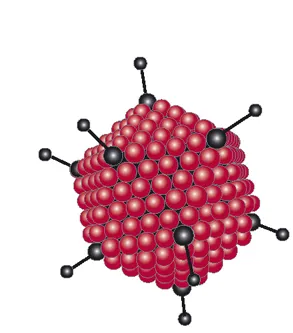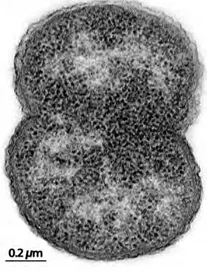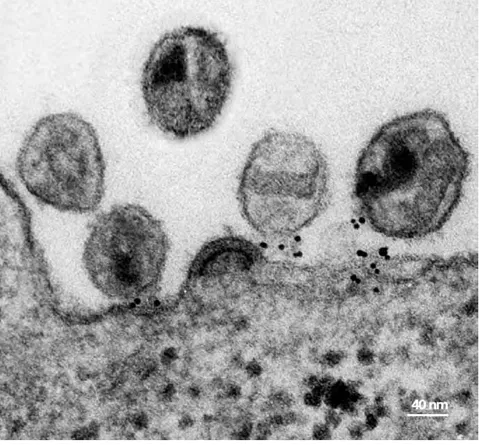
eBook - ePub
Biology of Disease
Nessar Ahmed, Maureen Dawson, Chris Smith, Ed Wood
This is a test
Condividi libro
- 600 pagine
- English
- ePUB (disponibile sull'app)
- Disponibile su iOS e Android
eBook - ePub
Biology of Disease
Nessar Ahmed, Maureen Dawson, Chris Smith, Ed Wood
Dettagli del libro
Anteprima del libro
Indice dei contenuti
Citazioni
Informazioni sul libro
Biology of Disease describes the biology of many of the human disorders and disease that are encountered in a clinical setting. It is designed for first and second year students in biomedical science programs and will also be a highly effective reference for health science professionals as well as being valuable to students beginning medical school. Real cases are used to illustrate the importance of biology in understanding the causes of diseases, as well as in diagnosis and therapy.
Domande frequenti
Come faccio ad annullare l'abbonamento?
È semplicissimo: basta accedere alla sezione Account nelle Impostazioni e cliccare su "Annulla abbonamento". Dopo la cancellazione, l'abbonamento rimarrà attivo per il periodo rimanente già pagato. Per maggiori informazioni, clicca qui
È possibile scaricare libri? Se sì, come?
Al momento è possibile scaricare tramite l'app tutti i nostri libri ePub mobile-friendly. Anche la maggior parte dei nostri PDF è scaricabile e stiamo lavorando per rendere disponibile quanto prima il download di tutti gli altri file. Per maggiori informazioni, clicca qui
Che differenza c'è tra i piani?
Entrambi i piani ti danno accesso illimitato alla libreria e a tutte le funzionalità di Perlego. Le uniche differenze sono il prezzo e il periodo di abbonamento: con il piano annuale risparmierai circa il 30% rispetto a 12 rate con quello mensile.
Cos'è Perlego?
Perlego è un servizio di abbonamento a testi accademici, che ti permette di accedere a un'intera libreria online a un prezzo inferiore rispetto a quello che pagheresti per acquistare un singolo libro al mese. Con oltre 1 milione di testi suddivisi in più di 1.000 categorie, troverai sicuramente ciò che fa per te! Per maggiori informazioni, clicca qui.
Perlego supporta la sintesi vocale?
Cerca l'icona Sintesi vocale nel prossimo libro che leggerai per verificare se è possibile riprodurre l'audio. Questo strumento permette di leggere il testo a voce alta, evidenziandolo man mano che la lettura procede. Puoi aumentare o diminuire la velocità della sintesi vocale, oppure sospendere la riproduzione. Per maggiori informazioni, clicca qui.
Biology of Disease è disponibile online in formato PDF/ePub?
Sì, puoi accedere a Biology of Disease di Nessar Ahmed, Maureen Dawson, Chris Smith, Ed Wood in formato PDF e/o ePub, così come ad altri libri molto apprezzati nelle sezioni relative a Medizin e Medizinische Theorie, Praxis & Referenz. Scopri oltre 1 milione di libri disponibili nel nostro catalogo.
Informazioni
chapter 1:
THE NATURE AND INVESTIGATION OF DISEASES
OBJECTIVES
After studying this chapter you should be able to:
- define appropriate terms associated with health and disease;
- give a simple classification of diseases;
- list the ways pathological investigations help in the diagnosis, treatment and management of diseases;
- discuss the clinical and analytical evaluations of laboratory tests
1.1 INTRODUCTION
Disease can be defined as any abnormality or failure of the body to function properly and this may require medical treatment (Figure 1.1). The scientific study of diseases is called pathology.
Every disease has a distinct set of features that include a cause, associated clinical symptoms and a characteristic progression, with associated morphological and functional changes in the patient. The presence of an abnormality on its own, however, does not necessarily indicate disease since the affected individual must also suffer from ill health. Health can be defined as an absence of signs and symptoms associated with any disease. This definition has limitations in that there are circumstances where individuals believe they are ill even though detectable indications of disease are not present. Conversely, there are individuals who believe they are healthy but on detailed examination are found to suffer from a serious disease. For this reason, the World Health Organization (WHO) devised the more appropriate definition of health as a state of physical, mental and social well-being and not merely the absence of disease. Currently there is considerable interest, particularly in developed countries, in promoting health by improving lifestyle and reducing mental and social factors associated with ill health.

Figure 1.1 A modern intensive care unit of a hospital.
Individuals differ in their physical appearance and also internally in the composition of the biological materials of which they are made. Differences between individuals are due to biological variation. Variation in values for measurable body features or biological substances (analytes) occurs for a number of reasons. Differences in the genotypes of individuals ensure that no two individuals are the same (other than identical twins). Biological variation arises due to differences in lifestyle, experiences, dietary and other factors as well as genes. There are also differences in physiological processes arising from bodily control mechanisms. For example, the concentration of blood glucose varies between individuals with diet, time of day and physical activity.
1.2 CHARACTERISTIC FEATURES OF DISEASES
Every disease has a number of characteristic features. These features allow diseases to be categorized and allow a better understanding of the disease, its diagnosis and management. A correct diagnosis should mean that appropriate treatment is given.

Figure 1.2 Schematic of an adenovirus (diameter about 70nm), which can cause respiratory infections.
ETIOLOGY
Etiology refers to the cause of a disease. Etiological agents can be endogenous, in other words originating from within the body, or exogenous, coming from outside the body. Endogenous agents include genetic defects and endocrine disorders, while exogenous agents include microorganisms such as viruses (Figure 1.2), bacteria (Figure 1.3) and fungi that cause infections, chemicals, physical trauma and radiation. Many diseases are said to be predictable and arise as a direct consequence of exposure to the causative agent. Other diseases are considered probable in that they may be a consequence of the causative agent but the development of illness is not inevitable. An individual can be infected with a pathogenic microorganism but the outcome of the disease may depend on other factors such as the nutritional and immune status of the affected person.
Some diseases have more than one etiological agent and may, indeed, be caused by a range of factors. Such diseases are said to be multifactorial in origin. Diabetes mellitus type 2, a disorder of carbohydrate, fat and protein metabolism, is believed to have a multifactorial origin involving several genetic, dietary and environmental factors (Chapter 7). Many diseases are of unknown cause and are said to be idiopathic. An example of this is hypertension, where more than 90% of cases are of unknown cause. The treatment of idiopathic diseases is restricted to alleviating the symptoms. Some conditions are caused by the effects of treatment and are called iatrogenic diseases (from the Greek word iatros, doctor). The treatment of some cancers with cytotoxic drugs, for example, can cause a severe iatrogenic anemia although they may be curing the cancer.

Figure 1.3 Electron micrograph of the bacterial pathogen, Neisseria meningitidis, a causative organism of meningitis (Chapters 2 and 3). Courtesy of Dr A. Curry, Manchester Royal Infirmary, UK.
Occasionally a disease of unknown etiology is more commonly found in populations with certain dietary, occupational or lifestyle conditions called risk factors. Smoking is a significant risk factor in the development of heart disease and lung cancer (Chapters 14 and 17). Some risk factors may be important in the development of the disease whereas others may make the individual more susceptible to disease. Predisposing factors are conditions or situations that make an individual more susceptible to disease. They include age, sex, heredity and environmental factors. For example, the immune system in a newborn is not fully developed and, as a consequence, babies are more susceptible to infections. However, during aging the immune system undergoes a progressive decline in function making the elderly also more susceptible to infections. Sex may also be a predisposing factor: men are more likely to suffer from gout than women whereas osteoporosis is more common in the latter.

Figure 1.4 Electron micrograph of HIV particles escaping from a cultured human cell. Courtesy of Dr. D. Robertson and Professor R.A. Weiss, Institute for Cancer Research, Royal Cancer Hospital, UK.
Some diseases increase the risk of developing others. Thus some conditions increase the risk of someone developing cancer and are said to be premalignant.This is seen in ulcerative colitis, an inflammatory condition affecting the large intestine that increases the probability of developing bowel cancer in sufferers. Some diseases predispose the patient to other conditions by allowing infectious agents, not normally pathogenic, to cause disease. This is seen in opportunistic infections where a decline in the immunological functions of an individual makes them susceptible to infections by microorganisms that are normally nonpathogenic. In acquired immunodeficiency syndrome (AIDS), the individuals infected with the human immunodeficiency virus (HIV), (Figure 1.4) have little resistance to infections by microorganisms, such as those responsible for causing pneumonia, as well as microorganisms such as the yeast Candida, which are part of the normal flora of the body (Chapter 2).
Diseases are often described as being primary or secondary. Primary may refer to a disease of unknown cause or idiopathic, whereas secondary is used to refer to a condition that arises from an existing disease. However, these terms are also often used to describe the stages of a disease. For example, in cancer the primary tumor is the initial tumor whereas secondary tumors arise following metastasis of the primary tumor to other tissues (Chapter 17).
PATHOGENESIS
Every disease has a pathogenesis that describes the development of the disease or, more specifically, how the etiological agent(s) acts to produce the clinical and pathological changes characteristic of that disease. Some examples of how diseases undergo pathogenesis include inflammatory reactions in response to harmful agents and carcinogenesis where the formation of tumors occurs as a result of exposure to carcinogens (cancer-inducing substances). Diseases have ‘natural histories’ that describe the typical patterns of how each disease usually progresses, its effects and its duration. The effects of the disease on the patient are referred to as morbidity. Occasionally the morbidity of a disease may cause disability that, in turn, may restrict the activities of the patient. The mortality of a disease describes its possibility of causing death. This is usually expressed as a percentage. Some diseases have a rapid, often severe onset that is described as acute. However, other diseases have a chronic onset and develop gradually over a relatively longer time. Thus acute renal failure is characterized by rapid deterioration of kidney function over a matter of days, while chronic renal failure develops over months or even years (Chapter 8).
Diseases rarely occur immediately following exposure to an etiological agent. In most cases, a period of time, the incubation period, must elapse before the disease becomes apparent. In carcinogenesis, this period may last several decades and is referred to as the latent period. With infectious diseases, the time between exposure and development of the disease is often characteristic of the infectious agent involved.
Diseases rarely occur immediately following exposure to an etiological agent. In most cases, a period of time, the incubation period, must elapse before the disease becomes apparent. In carcinogenesis, this period may last several decades and is referred to as the latent period. With infectious diseases, the time between exposure and development of the disease is often characteristic of the infectious agent involved.
MANIFESTATIONS OF DISEASES
The etiology of a disease and its pathogenesis produce clinical manifestations that include signs and symptoms of the disease. A symptom is an indication that a disease is present and something of which the patient complains, for example, nausea, malaise or pain (Table 1.1). A sign is something that the clinician specifically looks or feels for, such as redness or swelling of the skin, when examining the patient. Some diseases present with a subclinical stage where these signs and symptoms are not apparent, even though the disease is established and characteristic biochemical and cellular changes that are detectable by laboratory analysis of, for example blood or urine have taken place.
Clinical signs and ...